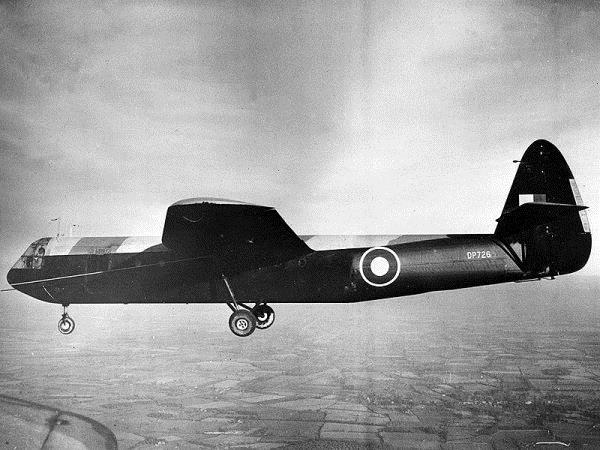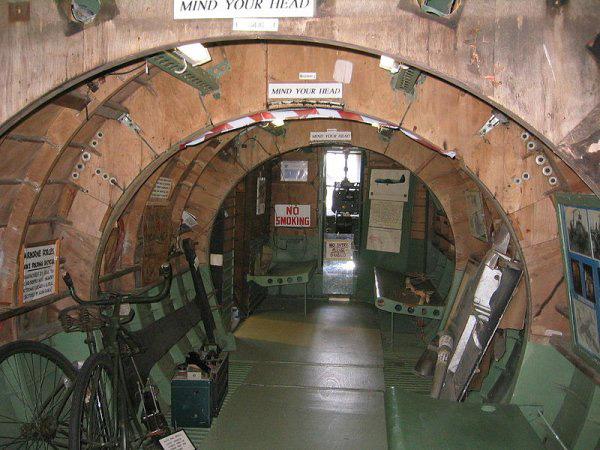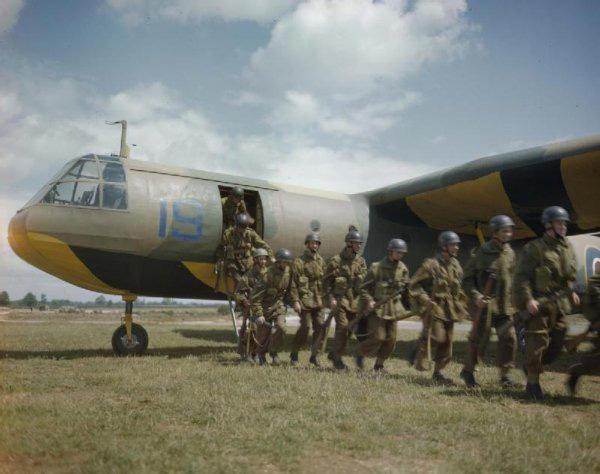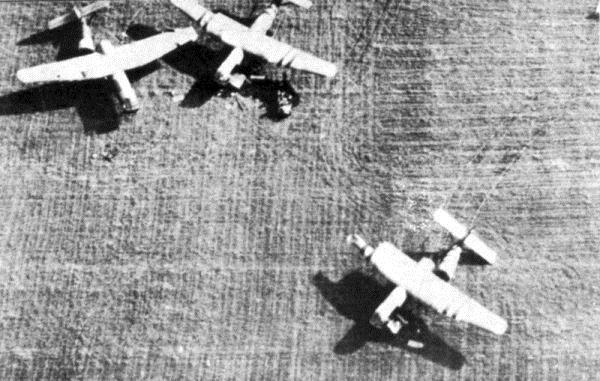
10 minute read
The Horsa Glider
In the mid 60s as an 11yr old boy my family relocated from the suburbs of Oxford to a farmhouse near Standlake in West Oxfordshire, miles from anywhere, our nearest neighbour being ¼ mile away. As children we had to make our own entertainment as children will do everywhere, what has this to do with anything you ask? Well how many kids can say they spent hours pretending to fly their own Horsa glider?
Next to our new home and part of the property was a large, untended orchard. In the orchard was the remains of a glider, the wings were missing (used for firewood I am led to believe) but even after 20+ years the body was surprisingly intact if a little overgrown with weeds. There were no instruments left in the cockpit but the seats and flying columns were there as were the rudder pedals, what more could a young lad want?
Advertisement
According to the farmer down the hill the glider had crash landed in 1944 when it suddenly lost its tow shortly after take off from nearby RAF Brize Norton, unable to regain the airfield the pilot or pilots had instead crash-landed in the orchard. Whichever department of the War Office who oversaw collection of this sort of thing obviously decided it wasn’t worth the time and effort required to recover the entire airframe from such a difficult place so had stripped it of all the important and easily transportable parts and left the rest to rot.
The Cockpit In the 60s as a young child the significance of this aircraft was lost on me, we were not taught about the war at Witney Grammar despite, or maybe because of, the fact many of our teachers had fought in it, it was therefore many years later I learnt of its importance.
The AS.51 Horsa was a troop-carrying glider built by Airspeed Limited and subcontractors and used for air assault by British and Allied armed forces and was named after Horsa, the 5th century conqueror of southern Britain.

E-Zine 2014 Volume 6 Issue 1 | 48 The Germans had been the pioneers of airborne operations, conducting several successful operations during the Battle of France in 1940, including the use of glider-borne troops in the Battle of Fort Eben-Emael. Impressed by this, the Allied governments decided to form their own airborne formation. This eventually led to the creation of two British airborne divisions, as well as a number of smaller units. The British airborne establishment began development in June 1940, when the Prime Minister, Winston Churchill, A prototype on tow directed the War Office to investigate the possibility of creating a corps of 5,000 parachute troops. Continued on next page
When the equipment for the airborne forces was under development, it was decided by War Office officials that gliders would be an integral component of such a force; these would be used to transport troops and heavy equipment. The first glider to be designed and produced was the General Aircraft Hotspur, the first prototype of which flew in November 1940. However, several problems were found with the Hotspur’s design, the primary one being that the glider did not carry sufficient troops. Tactically it was believed that airborne troops should be landed in groups far larger than the eight the Hotspur could transport, and also the number of aircraft required to tow the gliders needed to carry larger groups would be impractical. There were also concerns that the gliders would have to be towed in tandem if used operationally, which would be extremely difficult during night time and through cloud formations. It was therefore decided to use the Hotspur as a training glider, and continue with the development of several other types of glider, including a 25-seater assault glider which became the Airspeed Horsa.
Originally it was planned that the Horsa would be used to transport paratroopers who would jump from either side of the fuselage, and that the actual landing would be a secondary role; however the idea was soon dropped, and it was decided to simply have the glider land airborne troops. An initial order was placed for 400 of the gliders in February 1941, and it was estimated that Airspeed should be able to complete the order by July 1942. Enquiries were made into the possibility of a further 400 being produced in India for use by Indian airborne forces, but this was abandoned when it was discovered the required wood would have to be imported into India at a prohibitive cost. Five prototypes were ordered with Fairey Aircraft producing the first two prototypes for flight testing while Airspeed completed the remaining prototypes to be used in equipment and loading tests. The first prototype took flight on 12 September 1941.

200 AS 52 Horsas were also to be constructed to carry bombs. A central fuseaLooking back from the cockpit lage bomb bay holding four 2,000 lb or two 4,000 lb bombs was fitted into the standard fuselage but this idea was dropped as other bombers came into service as this model was discontinued.
Production commenced in early 1942, and by May some 2,345 had been ordered by the Army for use in future airborne operations. Like the modern day Airbus aircraft the glider was designed to be built in components with a series of 30 sub-assemblies required to complete the manufacturing process. Manufacturing was intended primarily to use wood crafting facilities not needed for more urgent aviation production, and as a result production was spread across separate factories, which limited the likely loss in case of German attack.
The Horsa Mark I had a wingspan of 88 feet and a length of 67 feet and when fully loaded weighed 15,250lbs.
49 | Volume 6 Issue 1 E-Zine 2014 The Horsa was considered sturdy and very manoeuvrable for a glider. Its design was based on a high-wing cantilever monoplane with wooden wings and a wooden semi-monocoque fuselage. The fuselage was built in three sections bolted together, the front section held the pilot’s compartment and main freight loading Continued on next page

The wing carried large “barn door” flaps which, when lowered, made a steep, high rate-of-descent landing possible — allowing the pilots to land in constricted spaces. The pilot’s compartment had two side-by-side seats and dual controls. Aft of the pilot’s compartment was the freight loading door on the port side. The hinged door could also be used as a loading ramp. The main compartment could accommodate 15 troops on benches along the sides with another access door on the starboard side. The fuselage joint at the rear end of the main section could be broken on landing to assist in rapid unloading of troops and equipment. Troops practising at RAF Brize Norton.
The stripes on the underside are to indicate to other aircraft it is on tow.
Supply containers could also be fitted under the centre-section of the wing, three on each side. The later AS 58 Horsa II had a hinged nose section, reinforced floor and double nose wheels to support the extra weight of vehicles. The tow cable was attached to the nose wheel strut, rather than the dual wing points of the Horsa I.
The Airborne Forces Experimental Establishment and 1st Air landing Brigade began loading trials with the prototypes in March but immediately ran into problems. Staff attempted to fit a jeep into a prototype, only to be told by Airspeed personnel present that to do so would break the glider’s loading ramp, as it had only been designed to hold a single motorbike. With this lesson learnt, 1st Airlanding Brigade subsequently began sending samples of all equipment required to go into Horsas to Airspeed, and a number of weeks were spent ascertaining the methods and modifications required to fit the equipment into it.
Operational history
With up to 30 troop seats,[18] the Horsa was much bigger than the 13-troop American Waco CG-4A (known as the Hadrian by the British), and the 8-troop General Aircraft Hotspur glider which was intended for training duties only. Instead of troops, the AS 51 could carry a jeep or a 6 pounder anti tank gun.
The Horsa was first used operationally on the night of 19/20 November 1942 in the unsuccessful attack on the German Heavy Water Plant at Rjukan in Norway (Operation Freshman). The two Horsa gliders, each carrying 15 sappers, and one of the Halifax tug aircraft, crashed in Norway due to bad weather. All 23 survivors from the glider crashes were executed on the orders of Hitler, in direct contravention of the Geneva Convention which protects POWs from summary execution. In preparation for further operational deployment, Gliders on the ground at Pegasus bridge 30 gliders were air-towed to North Africa but three aircraft were lost in transit. On 10 July 1943, the 27 surviving gliders were used in Operation Husky, the invasion of Sicily. Large numbers (estimated at over 250) were subsequently used in Battle of Normandy; in the British Operation Tonga and American operations. The first units to land in France, during the Battle of Normandy, was a coup de main force carried by 6 Horsas that captured Pegasus Bridge in Operation Deadstick, over the Caen canal, and a further bridge over the River Orne. 320 Horsas were used in the first lift and a further 296 Horsas were used in the second lift. Large numbers were also used for Operation Dragoon and Operation Market Garden, both in 1944, and Operation Varsity in March 1945; the final operation for the Horsa when 440 gliders carried soldiers of the 6th Airborne Division across the Rhine.

On operations, the Horsa was towed by various aircraft: four engined heavy bombers displaced from operational service such as the Short Stirling and Handley Page Halifax, the Armstrong Whitworth Albemarle and Armstrong Whitworth Whitley twin engined bombers, as well as the US Douglas C-47 Skytrain/Dakota (not as often due to the weight of the glider, however in Operation Market Garden, a total of 1,336 C-47s along with 340 Stirlings were employed to tow 1,205 gliders, and Curtiss C-46 Commando. They were towed with a harness that attached to points on both wings, and also carried an intercom between tug and glider. The glider pilots were usually from the Glider Pilot Regiment, part of the Army Air Corps, although Royal Air Force pilots were used on occasion.
The United States Army Air Forces (USAAF) acquired approximately 400 Horsas in a form of “reverse” Lend-Lease.[18] A small number of Horsa Mk IIs were obtained by the Royal Canadian Air Force for post-Second World War evaluation at CFB Gimli, Manitoba. Three of these survivors were purchased as surplus in the early 1950s and ended up in Matlock, Manitoba where they were eventually scrapped. A small number of Horsas were also evaluated postwar in India. Due to low surplus prices in the UK, many were bought and converted to travel trailers and vacation cottages.

The replica at Pegasus bridge On 5 June 2004, as part of the 60th anniversary commemoration of D-Day, Prince Charles unveiled a replica Horsa on the site of the first landing at Pegasus Bridge, and talked with Jim Wallwork, the first pilot to land the aircraft on French soil during D-Day.
Ten replicas were built for use in the 1977 film A Bridge Too Far, mainly for static display and set-dressing, although one Horsa was modified to make a brief “hop” towed behind a Dakota at Deelen, the Netherlands. During the production, seven of the replicas were
Last year I took my own now grown up children back to where I had lived and played so long ago, the farmhouse had been demolished and replaced with a modern and quite ugly dwelling, of the orchard there was no sign instead there were 2 houses on it, I guess the rest of the glider had finally gone for firewood as well.
Kevin Stevens Editor











